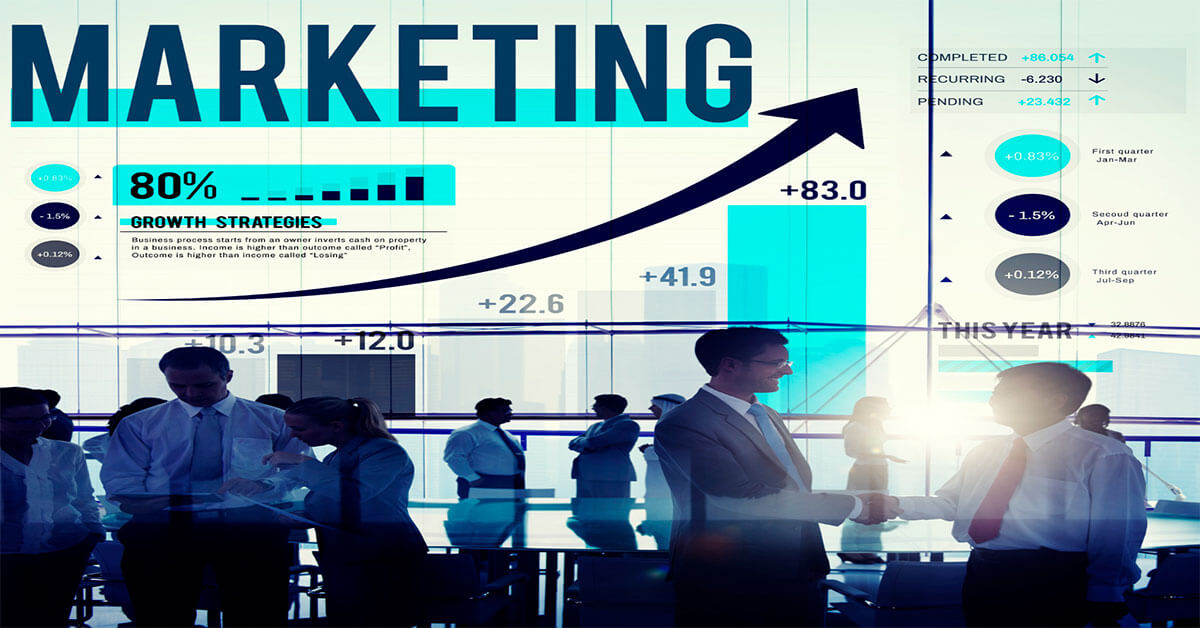How to Start a Clothing Line in 2024: Step-by-Step Guide for Entrepreneurs
Starting a clothing line is a dream shared by many creative individuals. The idea of seeing your designs brought to life and worn by people across the world can be both exhilarating and challenging. However, transforming that dream into a successful fashion business requires more than just creativity—it requires strategic planning, dedication, and an understanding of the fashion industry.
In this comprehensive guide, we’ll walk you through the essential steps needed to build your own clothing brand from scratch. Whether you’re driven by passion for design or looking to launch a profitable eCommerce venture, this guide will cover everything you need, from identifying your brand identity to launching your eCommerce store. Let’s get started on turning your clothing line vision into reality!
Identify Your Brand and Target Audience

Every successful clothing line starts with a clear and unique brand identity. This step is crucial because your brand’s identity will be the foundation of everything you do—from the style of your clothes to the way you communicate with your audience. In this section, we’ll walk you through defining your brand’s mission, values, and vision, as well as how to identify your target audience. After all, a strong connection with your target audience is essential for long-term success.
Define Your Brand Identity
- Mission Statement: Clearly outline the purpose of your brand. What are you trying to achieve in the fashion world?
- Core Values: What principles guide your brand? Is it sustainability, affordability, luxury, or inclusivity?
- Brand Vision: Where do you see your clothing line in 5 or 10 years? Think about the impact you want to have in the industry.
- Unique Selling Proposition (USP): What makes your brand different? Highlight the key elements that set you apart from competitors.
Identify Your Target Audience
Once you have a clear idea of who you are as a brand, it’s time to identify who you are speaking to. Understanding your target market is essential for creating designs that will resonate with them and for marketing your brand effectively.
- Demographic Research: Identify the age, gender, location, and income level of your ideal customer.
- Psychographics: What are your audience’s interests, values, and lifestyle choices? This will influence your design and marketing strategies.
- Market Needs: Determine what your target audience needs and how your brand will fulfill those needs.
For more inspiration on naming your brand, check out these Clothing Store Name Ideas to help your creativity flow.
Conduct Market Research and Fashion Trends

Before diving into the production of your clothing line, it’s essential to thoroughly research your market. Market research allows you to understand the current fashion landscape and identify where your brand fits in. By analyzing the latest fashion trends and what competitors are doing, you can make informed decisions about your designs and marketing strategies.
Analyze Your Competitors
- Identify Key Players: Look at other brands in your niche. Who are their target customers? What products do they offer?
- Study Their Strengths and Weaknesses: Take note of what they do well and where they fall short. Use these insights to find opportunities for your brand.
- Price Comparison: How are competitors pricing their products? This will help you set competitive and profitable prices.
Stay On Top of Fashion Trends
Fashion trends are constantly changing, so it’s important to stay ahead of the curve. By keeping an eye on trends, you can ensure your designs stay relevant and desirable.
- Use Google Trends: This tool can show you what’s popular in real-time and give you insights into fashion trends that are gaining momentum.
- Follow Fashion Influencers: Influencers on platforms like Instagram and TikTok often highlight emerging trends. Following them will keep you informed on what’s hot in the fashion world.
- Analyze Fashion Weeks and Shows: Major fashion events can inspire you with the latest designs and trends to incorporate into your own line.
Create a Solid Business Plan

A well-structured business plan is the roadmap to your clothing line’s success. This document will help you outline your vision, define your goals, and guide your brand toward profitability. It’s also crucial if you’re seeking investors or funding to get your business off the ground.
Key Components of a Business Plan
- Executive Summary: A brief overview of your business, your goals, and why your clothing line will succeed.
- Company Description: Describe your brand, including your mission, target audience, and what makes your brand unique.
- Market Analysis: Present your market research, including industry trends and competitor analysis, to show you understand the space you’re entering.
- Product Line: Provide details on the types of clothing you plan to offer and any future collections you’re planning.
- Sales and Marketing Strategy: Outline how you will attract and retain customers, including any marketing tactics you plan to use.
- Financial Projections: Estimate your expected costs, revenues, and profits. Investors will want to see clear, data-driven financial forecasts.
Leverage E-Commerce for Success
Setting up an e-commerce store is a crucial step in the modern fashion industry. For more in-depth guidance on building a successful online store, check out this eCommerce Business guide to learn more about setting up your website, handling logistics, and managing online sales effectively.
Design and Develop Your Collection

This is where your creativity truly shines. The design and development phase allows you to bring your ideas to life through sketches, fabric selection, and creating prototypes. In this section, we’ll cover the critical steps involved in designing a unique collection while balancing creativity with practicality.
Sketch Your Designs
- Start with Inspiration: Build mood boards with visuals and ideas to inspire your designs. Draw from art, nature, fashion trends, or personal experiences.
- Use Fashion Design Software: Tools like Adobe Illustrator or Autodesk Sketchbook allow you to create professional digital sketches.
- Finalize Your Collection: Organize your sketches into a cohesive collection that represents your brand’s identity and vision.
Choose Fabrics and Materials
The fabric you choose plays a huge role in the quality and appeal of your clothing. It’s important to select materials that fit your designs and meet your target audience’s needs.
- Quality and Durability: Always prioritize quality fabrics that will ensure durability and customer satisfaction.
- Cost Consideration: Balance the cost of materials with your overall production budget to ensure profitability.
- Sustainability: Consider eco-friendly or sustainable materials if that aligns with your brand’s values.
Create Prototypes
Once your designs are finalized and fabrics selected, it’s time to create prototypes. Prototypes allow you to test the fit, style, and practicality of your designs before moving into full production.
- Test Fit and Functionality: Try your prototypes on models to see how the clothing moves and fits in real-life scenarios.
- Revise Based on Feedback: Make necessary adjustments to perfect your designs based on feedback from models or early testers.
Source Fabrics and Find Manufacturers

Sourcing high-quality fabrics and finding reliable manufacturers are two key elements that will affect the quality, cost, and delivery timeline of your clothing line. Your choice of supplier can make or break your business, so it’s important to take the time to find the right partners.
Source High-Quality Fabrics
- Build Relationships with Suppliers: Establish strong relationships with fabric suppliers to ensure better deals and faster turnaround times.
- Compare Domestic vs. International Sourcing: Consider the pros and cons of sourcing materials from domestic suppliers versus international ones. Domestic suppliers may offer faster delivery, while international suppliers might provide cost savings.
- Order Samples: Always request fabric samples before committing to a large order. This allows you to verify the quality and suitability for your designs.
Find a Reliable Manufacturer
- Research Potential Partners: Look for manufacturers who specialize in the types of clothing you plan to produce, whether it’s streetwear, formalwear, or activewear.
- Visit Manufacturing Facilities: If possible, visit the factory in person to ensure their facilities meet your quality and ethical standards.
- Negotiate Terms: Be clear about production timelines, costs, and payment terms before entering into a contract with a manufacturer.
Set Up an E-commerce Store

In today’s digital age, having an online presence is crucial for your clothing line’s success. Setting up an e-commerce store allows you to reach a broader audience and makes it easy for customers to browse and purchase your products. In this section, we’ll cover the essential steps for setting up your store, creating a strong online presence, and optimizing your website for conversions.
Choose the Right E-commerce Platform
- Select a User-Friendly Platform: Look for platforms like Shopify, WooCommerce, or BigCommerce, which offer easy-to-use interfaces and support for clothing businesses.
- Consider Payment Integration: Ensure your platform integrates with popular payment gateways like PayPal, Stripe, or Apple Pay to provide a seamless checkout experience.
- Optimize for Mobile: Since many customers shop from their mobile devices, ensure your website is mobile-responsive for better customer experience.
Create a Strong Brand Presence Online
- Design an Eye-Catching Logo: Your logo is the face of your brand, so make sure it reflects your brand identity and stands out.
- Use High-Quality Product Photos: Invest in professional photography to showcase your products in the best light.
- Optimize Your Website Layout: Ensure your site is easy to navigate, with clear categories and calls-to-action to drive purchases.
Pricing and Conversion Optimization
- Set Competitive Prices: Use your market research to set prices that reflect the quality of your products and appeal to your target audience.
- Offer Discounts and Promotions: Running promotions, such as free shipping or seasonal discounts, can help increase conversions.
- Use SEO Strategies: Optimize your website content for search engines by using relevant keywords, product descriptions, and meta tags to improve your rankings.
For more detailed insights into building your store, check out this eCommerce Business guide to help you get started.
Build Your Marketing and Sales Strategy

Building a strong marketing and sales strategy is crucial for reaching your target audience and generating sales. In the competitive fashion industry, it’s important to use multiple channels to promote your brand and create lasting customer relationships. This section will guide you through essential strategies, including social media marketing, influencer collaborations, and building an engaging online presence.
Leverage Social Media Platforms
- Instagram and Pinterest: Use these visual platforms to showcase your designs, behind-the-scenes content, and engage with your audience.
- Use TikTok for Viral Content: Create short, engaging videos that highlight your products and tap into viral trends to increase visibility.
- Run Social Media Ads: Facebook and Instagram ads allow you to target specific demographics, driving traffic to your online store.
Collaborate with Influencers
- Micro-Influencers: Collaborate with influencers who have a smaller but highly engaged following to promote your clothing line.
- Influencer Giveaways: Partner with influencers to run giveaways and contests, which can help increase your brand’s visibility and grow your following.
Email Marketing and Customer Retention
- Build an Email List: Collect customer emails through your website and offer incentives like discounts or exclusive access to new collections.
- Send Personalized Emails: Use email marketing tools to send targeted emails based on customer preferences, encouraging repeat purchases.
- Offer Loyalty Programs: Create a customer loyalty program that rewards repeat purchases with discounts or exclusive offers.
Launch Your Brand and Grow

After months of preparation, it’s finally time to launch your clothing line! Whether you opt for a soft launch or a grand opening, the key is to build momentum and excitement around your brand. Launching is only the beginning—you’ll also need to gather feedback and focus on growing your business over time. In this section, we’ll cover the essential strategies for a successful launch and ways to grow your brand as you move forward.
Prepare for Launch
- Soft Launch vs. Grand Launch: Decide whether you want to test the waters with a soft launch to a select audience or go all out with a grand launch and promotional campaign.
- Build Pre-Launch Hype: Use email marketing, social media teasers, and influencer partnerships to build excitement before your official launch.
- Create a Launch Event: Whether virtual or in-person, consider hosting a launch event to celebrate your brand’s debut and engage with your first customers.
Gather Customer Feedback
- Encourage Reviews: Ask your customers to leave reviews on your website or social media, which will help build credibility and trust with new buyers.
- Listen to Constructive Feedback: Use customer feedback to make improvements in your products or services. Continuously refining your offering is key to growth.
Strategies for Growth
- Expand Product Lines: Once you’ve established your brand, consider introducing new products or collections to keep your customers engaged and excited.
- Enter Retail Stores: If your business grows, you might consider partnerships with brick-and-mortar retailers to reach a wider audience.
- Explore International Markets: As your brand grows, explore expanding your e-commerce store to international markets and catering to global customers.
Conclusion
Starting your own clothing line is a challenging yet rewarding journey. From identifying your brand identity to conducting market research, designing your collection, and finally launching your business, each step requires careful planning and execution. However, with dedication and a clear strategy, you can turn your dream of owning a successful clothing brand into reality.
Remember that building a business takes time, so be patient, stay adaptable, and always listen to your customers. Success doesn’t happen overnight, but with consistent effort and innovation, your clothing line can grow and thrive.
We hope this guide has provided you with the tools and inspiration to start your clothing line and make your mark in the fashion industry!








